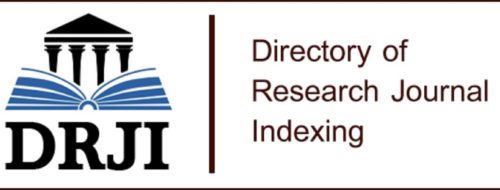THE RELATIONSHIP OF SOCIAL TRANSFER EXPENDITURES-INCOME INEQUALITY: A COMPARATIVE PANEL CAUSALITY ANALYSIS
Öz
Increases in income inequality levels for many developed and developing countries inevitably arise due to the inadequate and inefficient intervention of the public in the economy through taxes, transfer
payments and the provision of public goods and services. From the public expenditure perspective, it can be asserted that especially transfer payments to low-income groups play a key role in reducing income inequality. In many studies, it has been concluded that the Gini coefficient, which is the most widely used criterion in analyzing the total income inequality, is the most reactive to transfer expenditures among the public redistribution policies. The aim of this study is to analyze the relationship between social transfer expenditures and income inequality by including the discrepancies in income levels of the countries. In this framework, 60 countries subject to the analysis have been separated according to the classification of the World Bank and Dumitrescu-Hurlin panel causality analysis has been implemented to determine the relationship between social transfer expenditures and income inequality in the period of 1996-2018. The findings point that there is a two-way causality relationship between social transfer expenditures and income inequality in high-income countries and high-middle and low-middle income countries. However, this relationship emerges relatively robust in high-income countries.
Anahtar Kelimeler
Income Inequality Gini Coefficient Social Transfer Expenditures Panel Causality Analysis
Kaynakça
- Alesina , A., ve Angeletos, G.-M. (2005). Fairness and redistribution, American Economic Review, 95(4), 960-980.
- Alesina , A., ve Rodrik, D. (1994). Distributive politics and economic growth. The Quarterly Journal of Economics, 109(2), 465-490. Atkinson, A. (1983). Social justice and public policy. Cambridge: The MIT Press.
- Atkinson, A. (1996). Seeking to Explain the Distribution of Income. J. Hills (Ed.). New Inequalities içinde (s. 19-48). Cambridge, ABD: Cambridge University Press.
- Barr, N. (1992). Economic theory and the welfare state: A survey and interpretation. Journal of Economic Literature, 30(2), 741-803. Caminada, K., Wang , J., Goudswaard, K., ve Wang, C. (2017). Income inequality and fiscal redistribution in 47 LIS-countries, 1967-2014. LIS Working Paper Series (No.724).
- Chu, K.-y., Davoodi, H., ve Gupta, S. (2000). Income distribution and tax, and government social spending policies in developing countries. Helsinki: UNI/WIDER.
- d’Agostino, G., Pieroni, L., ve Scarlato, M. (2020). Social transfers and income inequality in OECD countries. Structural Change and Economic Dynamics, 52(C), 313-327.
- Doerrenberg, P., ve Peichl, A. (2014). The impact of redistributive policies on inequality in OECD Countries. Applied Economics, 46(17), 2066-2086.
- Dumitrescu, E.-I., ve Hurlin, C. (2012). Testing for Granger non-causality in heterogeneous panels. Economic Modelling, 29(4), 1450-1460.
- Friedman, M. (1937). The use of ranks to avoid the assumption of normality implicit in the analysis of variance. Journal of the American Statistical Association, 32(200), 675-701.
- Frees, E. W. (1995). Assessing cross-sectional correlation in panel data. Journal of Econometrics, 69(2), 393-414.
- Gottschalk, P., ve Smeeding, T. (1997). Cross-national comparisons of earnings and ıncome ınequality. Journal of Economic Literature, 35(2), 633-687.
- Gottschalk, P., ve Smeeding, T. (2000). Empirical Evidence on Income Inequality in Industrialized Countries. A. Atkinson, & F. Bourguignon (Eds.). Handbook of Income Distribution içinde (s. 261-307). Amsterdam, Hollanda: Elsevier.
- Granger, C. W. J. (1969). Investigating causal relations by econometric models and cross-spectral methods. Econometrica, 37(3), 424-438.
- Heady, C., Mitrakos, T., ve Tsakloglou, P. (2001). The distributional impact of social transfers in the European Union: Evidence from the ECHP. Fiscal Studies, 22(4), 547-565.
- Immervoll, H., ve Richardson, L. (2011). Redistribution policy and inequality reduction in OECD countries: What has changed in two decades?. IZA Discussion Paper (No. 6030).
- Joumard, I., Pisu, M., ve Bloch, D. (2012). Tackling income inequality: The role of taxes and transfers. OECD Journal: Economic Studies(1), 37-70.
- Korpi, W., ve Palme, J. (1998). The paradox of redistribution and strategies of equality: welfare state institutions, inequality, and poverty in the western countries. American Sociological Review, 63(5), 661-687.
- Lôpez, L., ve Weber, S. (2017). Testing for Granger causality in panel data. The Stata Journal, 17(4), 972-984.
- Lôpez, L. (2018). The impact of official development assistance on the donor’s economy the case of Switzerland (Yayımlanmamış doktora tezi). University of Neuchâtel Faculty of Economics and Business Institute of Economic Research.
- Martinez-Vazquez, J., Moreno-Dodson, B., ve Vulovic, V. (2012). The impact of tax and expenditure policies on income distribution: Evidence from a large panel of countries. Review of Public Economics, 200(4), 95-130.
- Meltzer, A., ve Richard, S. (1981). A rational theory of the size of government. Journal of Political Economy, 89(5), 914-927.
- Muinelo-Gallo, L., ve Roca-Sagalés, O. (2003). Joint determinants of fiscal policy, income inequality and economic growth. Economic Modelling(30), 814-824.
- Niehues, J. (2010). Social Spending Generosity and Income Inequality: A Dynamic Panel Approach. Berlin: SOEPpapers.
- Pesaran, M. H. (2004). General diagnostic tests for cross section dependence in panels. Cambridge Working Papers in Economics (No. CWPE/0435).
- Pesaran, M. H. (2007). A simple panel unit root test in the presence of cross-section dependence. Journal of Applied Econometrics, 22(2), 265-312.
- Pesaran, M. H., ve Yamagata, T. (2008). Testing slope homogeneity in large panels. Journal of Econometrics, 142(1), 50-93.
- Pigou, A. C. (1947). A study in public finance. London: MacMillan & Co.
- Sánchez, A., ve Pérez-Corral, A. (2018). Government social expenditure and income inequalities in the European Union. Hacienda Pública Española, 227(4), 133-156.
- Solt, F. (2020). Measuring income inequality across countries and over time: The standardized world income inequality database. Social Science Quarterly, 101(3), 1183-1189.
- Swamy, P. A. (1970). Efficient inference in a random coefficient regression model. Econometrica: Journal of the Econometric Society, 38(2), 311-323.
- Topuz, S. G., ve Doğan, E. (2020). Transfer harcamaları ve gelir eşitsizliği ilişkisi: panel nedensellik analizi ile karşılaştırmalı bir değerlendirme. İzmir İktisat Dergisi, 35(3), 549-562.
- Wang, C., Caminada, K., ve Goudswaard, K. (2014). Income redistribution in 20 countries over time. International Journal of Social Welfare, 23(3), 262-275.
- Wang, C., Caminada, K., ve Goudswaard, K. (2012). The redistributive effect of social transfer programmes and taxes: A decomposition across countries. International Social Security Review, 65(3), 27-48.
- Westerlund, J., ve Edgerton, D. (2007). A panel bootstrap cointegration test. Economic Letters, 97(3), 185-190.
Öz
Pek çok gelişmiş ve gelişmekte olan ülke açısından gelir eşitsizliği seviyelerinde meydana gelen
artışlar; kamunun vergiler, transfer ödemeleri ile kamusal mal ve hizmet sunumu aracılığıyla ekonomiye
müdahalesinin yetersiz ve etkinsiz gerçekleşmesi nedeniyle kaçınılmaz olarak ortaya çıkmaktadır.
Özellikle, kamu harcamaları çerçevesinden bakıldığında düşük gelir gruplarına yapılan transfer
ödemelerinin gelir eşitsizliğini azaltmakta kilit bir rol oynadığı öne sürülebilmektedir. Zira, birçok
çalışmada toplam gelir eşitsizliğinin analiz edilmesinde en yaygın kullanılan ölçüt olan Gini katsayısının
kamunun yeniden dağıtım politikaları içerisinde en fazla transfer harcamalarına duyarlı olduğu sonucuna
ulaşılmıştır. Bu çalışmanın amacı, sosyal transfer harcamaları ve gelir eşitsizliği ilişkisinin ülkelerin gelir
düzeyindeki farklılıkların analize dâhil edilerek ortaya koyulmasıdır. Bu çerçevede, analize konu edilen 60
adet ülke Dünya Bankası’nın sınıflandırmasına göre ayrıştırılmış ve 1996-2018 yıllarını kapsayan
dönemde sosyal transfer harcamaları-gelir eşitsizliği ilişkisinin tespiti için Dumitrescu-Hurlin panel
nedensellik analizi kullanılmıştır. Elde edilen bulgular, hem yüksek gelir grubuna dâhil ülkelerde hem de
yüksek-orta ve düşük-orta gelir grubuna dâhil ülkelerde sosyal transfer harcamaları ve gelir eşitsizliği
arasında çift yönlü nedensellik ilişkisi bulunduğuna işaret etmektedir. Ancak, yüksek gelir grubuna dâhil
ülkelerde bu ilişki göreli olarak daha güçlü ortaya çıkmaktadır.
Anahtar Kelimeler
Gelir Eşitsizliği Gini Katsayısı Sosyal Transfer Harcamaları
Kaynakça
- Alesina , A., ve Angeletos, G.-M. (2005). Fairness and redistribution, American Economic Review, 95(4), 960-980.
- Alesina , A., ve Rodrik, D. (1994). Distributive politics and economic growth. The Quarterly Journal of Economics, 109(2), 465-490. Atkinson, A. (1983). Social justice and public policy. Cambridge: The MIT Press.
- Atkinson, A. (1996). Seeking to Explain the Distribution of Income. J. Hills (Ed.). New Inequalities içinde (s. 19-48). Cambridge, ABD: Cambridge University Press.
- Barr, N. (1992). Economic theory and the welfare state: A survey and interpretation. Journal of Economic Literature, 30(2), 741-803. Caminada, K., Wang , J., Goudswaard, K., ve Wang, C. (2017). Income inequality and fiscal redistribution in 47 LIS-countries, 1967-2014. LIS Working Paper Series (No.724).
- Chu, K.-y., Davoodi, H., ve Gupta, S. (2000). Income distribution and tax, and government social spending policies in developing countries. Helsinki: UNI/WIDER.
- d’Agostino, G., Pieroni, L., ve Scarlato, M. (2020). Social transfers and income inequality in OECD countries. Structural Change and Economic Dynamics, 52(C), 313-327.
- Doerrenberg, P., ve Peichl, A. (2014). The impact of redistributive policies on inequality in OECD Countries. Applied Economics, 46(17), 2066-2086.
- Dumitrescu, E.-I., ve Hurlin, C. (2012). Testing for Granger non-causality in heterogeneous panels. Economic Modelling, 29(4), 1450-1460.
- Friedman, M. (1937). The use of ranks to avoid the assumption of normality implicit in the analysis of variance. Journal of the American Statistical Association, 32(200), 675-701.
- Frees, E. W. (1995). Assessing cross-sectional correlation in panel data. Journal of Econometrics, 69(2), 393-414.
- Gottschalk, P., ve Smeeding, T. (1997). Cross-national comparisons of earnings and ıncome ınequality. Journal of Economic Literature, 35(2), 633-687.
- Gottschalk, P., ve Smeeding, T. (2000). Empirical Evidence on Income Inequality in Industrialized Countries. A. Atkinson, & F. Bourguignon (Eds.). Handbook of Income Distribution içinde (s. 261-307). Amsterdam, Hollanda: Elsevier.
- Granger, C. W. J. (1969). Investigating causal relations by econometric models and cross-spectral methods. Econometrica, 37(3), 424-438.
- Heady, C., Mitrakos, T., ve Tsakloglou, P. (2001). The distributional impact of social transfers in the European Union: Evidence from the ECHP. Fiscal Studies, 22(4), 547-565.
- Immervoll, H., ve Richardson, L. (2011). Redistribution policy and inequality reduction in OECD countries: What has changed in two decades?. IZA Discussion Paper (No. 6030).
- Joumard, I., Pisu, M., ve Bloch, D. (2012). Tackling income inequality: The role of taxes and transfers. OECD Journal: Economic Studies(1), 37-70.
- Korpi, W., ve Palme, J. (1998). The paradox of redistribution and strategies of equality: welfare state institutions, inequality, and poverty in the western countries. American Sociological Review, 63(5), 661-687.
- Lôpez, L., ve Weber, S. (2017). Testing for Granger causality in panel data. The Stata Journal, 17(4), 972-984.
- Lôpez, L. (2018). The impact of official development assistance on the donor’s economy the case of Switzerland (Yayımlanmamış doktora tezi). University of Neuchâtel Faculty of Economics and Business Institute of Economic Research.
- Martinez-Vazquez, J., Moreno-Dodson, B., ve Vulovic, V. (2012). The impact of tax and expenditure policies on income distribution: Evidence from a large panel of countries. Review of Public Economics, 200(4), 95-130.
- Meltzer, A., ve Richard, S. (1981). A rational theory of the size of government. Journal of Political Economy, 89(5), 914-927.
- Muinelo-Gallo, L., ve Roca-Sagalés, O. (2003). Joint determinants of fiscal policy, income inequality and economic growth. Economic Modelling(30), 814-824.
- Niehues, J. (2010). Social Spending Generosity and Income Inequality: A Dynamic Panel Approach. Berlin: SOEPpapers.
- Pesaran, M. H. (2004). General diagnostic tests for cross section dependence in panels. Cambridge Working Papers in Economics (No. CWPE/0435).
- Pesaran, M. H. (2007). A simple panel unit root test in the presence of cross-section dependence. Journal of Applied Econometrics, 22(2), 265-312.
- Pesaran, M. H., ve Yamagata, T. (2008). Testing slope homogeneity in large panels. Journal of Econometrics, 142(1), 50-93.
- Pigou, A. C. (1947). A study in public finance. London: MacMillan & Co.
- Sánchez, A., ve Pérez-Corral, A. (2018). Government social expenditure and income inequalities in the European Union. Hacienda Pública Española, 227(4), 133-156.
- Solt, F. (2020). Measuring income inequality across countries and over time: The standardized world income inequality database. Social Science Quarterly, 101(3), 1183-1189.
- Swamy, P. A. (1970). Efficient inference in a random coefficient regression model. Econometrica: Journal of the Econometric Society, 38(2), 311-323.
- Topuz, S. G., ve Doğan, E. (2020). Transfer harcamaları ve gelir eşitsizliği ilişkisi: panel nedensellik analizi ile karşılaştırmalı bir değerlendirme. İzmir İktisat Dergisi, 35(3), 549-562.
- Wang, C., Caminada, K., ve Goudswaard, K. (2014). Income redistribution in 20 countries over time. International Journal of Social Welfare, 23(3), 262-275.
- Wang, C., Caminada, K., ve Goudswaard, K. (2012). The redistributive effect of social transfer programmes and taxes: A decomposition across countries. International Social Security Review, 65(3), 27-48.
- Westerlund, J., ve Edgerton, D. (2007). A panel bootstrap cointegration test. Economic Letters, 97(3), 185-190.
Ayrıntılar
| Birincil Dil | Türkçe |
|---|---|
| Bölüm | Makaleler |
| Yazarlar | |
| Yayımlanma Tarihi | 31 Ağustos 2021 |
| Kabul Tarihi | 22 Mayıs 2021 |
| Yayımlandığı Sayı | Yıl 2021 Sayı: 59 |
Cited By
Transfer Harcamalarının Gelir Dağılımı Üzerindeki Etkisinin İncelenmesi: Gelişmiş ve Gelişmekte Olan Ülkeler
Dumlupınar Üniversitesi Sosyal Bilimler Dergisi
https://doi.org/10.51290/dpusbe.1526280













ERÜ İktisadi ve İdari Bilimler Fakültesi Dergisi 2021 | iibfdergi@erciyes.edu.tr
Bu eser Creative Commons Atıf-Gayri Ticari-Türetilemez 4.0 Uluslararası Lisansı ile lisanslanmıştır.


